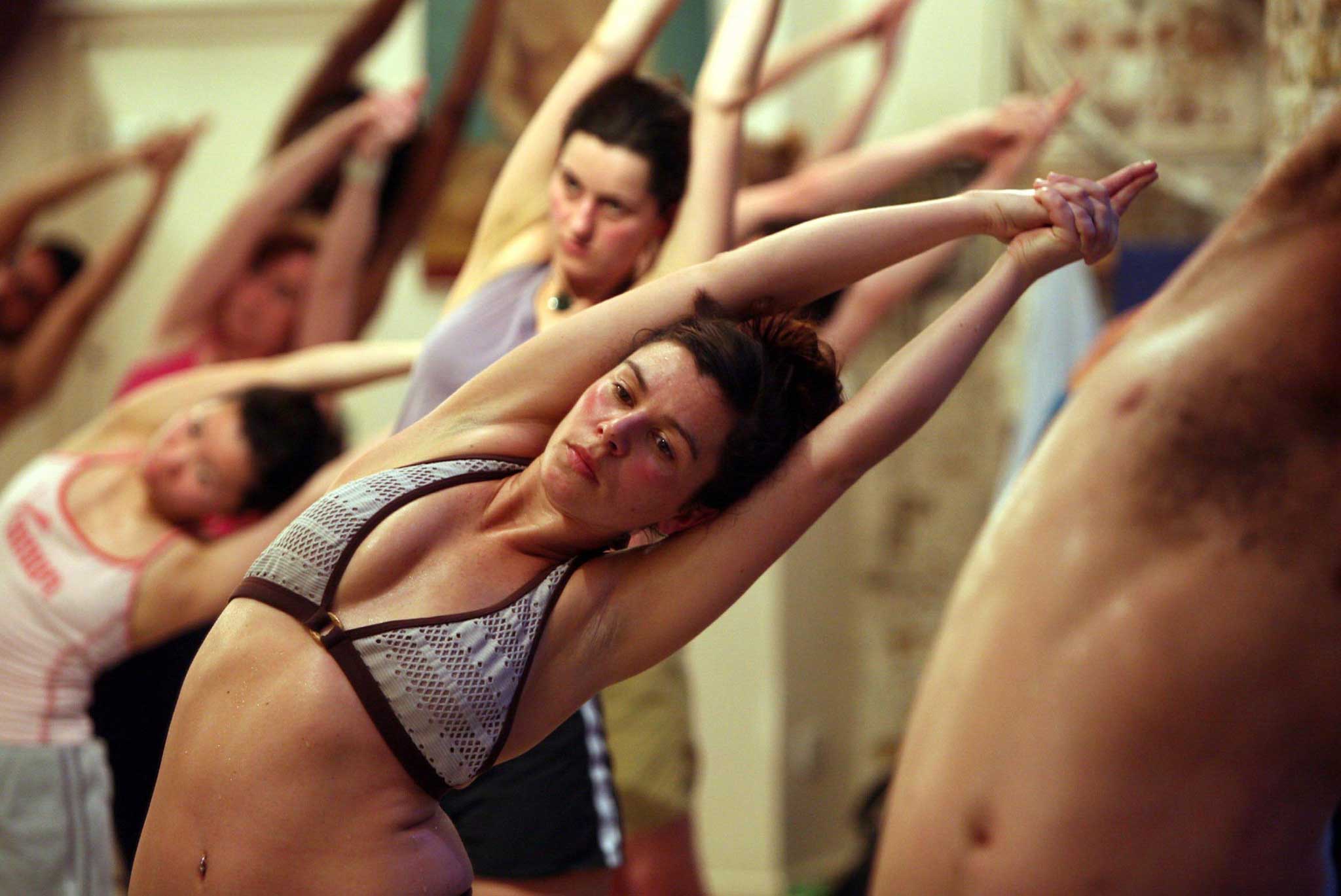Hell-Bent, By Benjamin Lorr
The dark side of competitive yoga and its acceptance of pain is explored in this book.

Your support helps us to tell the story
From reproductive rights to climate change to Big Tech, The Independent is on the ground when the story is developing. Whether it's investigating the financials of Elon Musk's pro-Trump PAC or producing our latest documentary, 'The A Word', which shines a light on the American women fighting for reproductive rights, we know how important it is to parse out the facts from the messaging.
At such a critical moment in US history, we need reporters on the ground. Your donation allows us to keep sending journalists to speak to both sides of the story.
The Independent is trusted by Americans across the entire political spectrum. And unlike many other quality news outlets, we choose not to lock Americans out of our reporting and analysis with paywalls. We believe quality journalism should be available to everyone, paid for by those who can afford it.
Your support makes all the difference.A poster of a woman's bare, perfectly ripped torso was recently tacked up on the sweat-slicked wall of my local Bikram yoga studio. Above it were the words: "Do you want to eat turkey, stuffing and mince pies and look like this?" and below, a promise that you could move closer to owning the enviable stomach if you chose the Bikram way.
Benjamin Lorr, in his book on competitive yoga, considers the "dark side" of the Bikram-acquired six-pack with his eye-watering investigation into the Beverly Hills craze of the 1970s that has since spread its bendy tentacles to affluent fitness enclaves across the West. Classes comprise 26 postures undertaken in 105-degree heat pumped around a room for a 90-minute session.
Lorr is not as interested in the gains for the moderate practitioner as he is in the potential dangers for an extreme yogi like himself. He argues, through his own story, how addictive the discipline can become for the right – or wrong – personality. His introduction to Bikram yoga brings surprisingly fast results, turning him from a fat 29-year-old into a whippet-thin back-bender with a 14-hour weekly regimen. This is a yoga, he suggests, that is suited to Alpha types seeking self-transformation, even if it involves a degree of masochism. As one teacher urges, "Each of us needs to find the painful place and go through it. Do not try to avoid it."
It is only after a nine-week teacher-training course that he begins to question the yoga's founding principles and most damningly of all, the credibility of the founder: Bikram Choudhury, depicted here as a fallen guru. Even for those familiar with some charges (particularly those of materialism, said to be antithetical to the spirit of yoga), Lorr's narrative still comes as a shock. If he wasn't real, someone could have made him up, Lorr says, and his life story certainly seems to verge on the fabular.
Trained in India from the age of three to an extraordinary level, Choudhury came to LA a shy naïf, giving free yoga classes until he was persuaded to start charging. Success led to a love of bling – money, hot-pants, gangster fantasies. Idiosyncrasies tip into offence as he allegedly singles out students for public humiliation. "Ms Boobs, why are you so lazy?" he is reported to have said to one. Then there are the castings-out, the flirtations and alleged overtures. Testimonies are from former students and friends. That Lorr has published this account is itself a feat, given that he also provides a case for how fiercely Choudhury protects his brand. He makes some potentially damaging claims, though there is a noticeable absence of a reply from Choudhury.
Beyond this central attack is Lorr's intellectual probing. He wonders if the spiritual side of yoga is obliterated on a competitive level? He also inspires the question of whether this yoga is so popular because it matches the ideals of Western materialism: its weight-loss, perfectionism and fast results. What gives the book its depth is this questioning, central to which is the underlying inquiry: can one follow a philosophy developed by a once-"authentic" guru or does his apparently "less pure" nature now render the philosophy inauthentic too?
Lorr does not reach any definitive conclusions. At times, the reader gets a sneaky sense that Lorr set out on his journey as much for the book as the spiritual quest. There are also so many testimonials from Bikramites who owe their recoveries from critical injuries or heroin addictions to the healing effects of the 105-degree workout that Lorr's doubts are drowned out. Perhaps this is intentional. Lorr distances himself from Bikram yoga but does not let go. He still attends the odd class, he admits. Any flaws in the inventor, it seems, can't quite eclipse the beauty of his invention.
Join our commenting forum
Join thought-provoking conversations, follow other Independent readers and see their replies
Comments